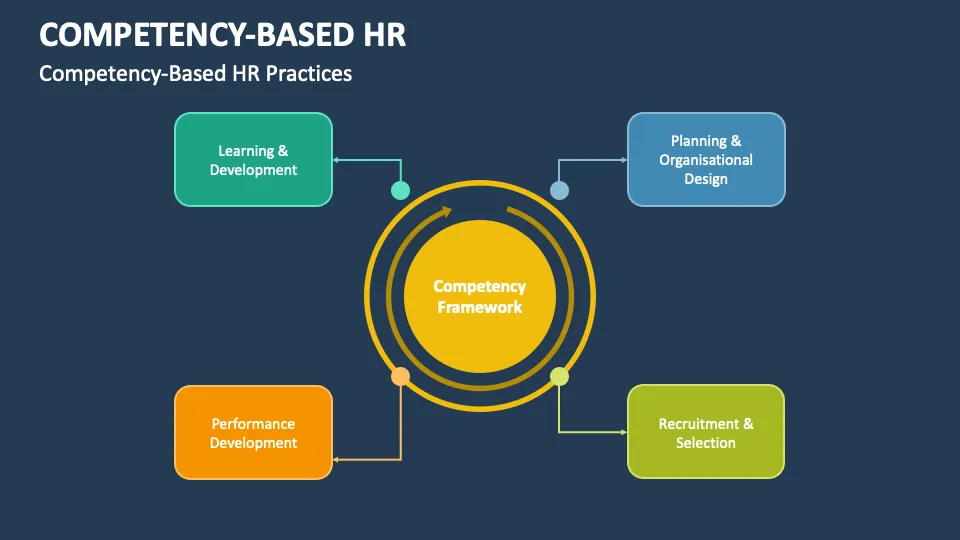Competency-based HR management is transforming how organizations handle their human resources.
This method emphasizes identifying and nurturing the specific skills and behaviors employees need to thrive in their roles. By aligning these competencies with the organization’s objectives, businesses can boost performance, productivity, and overall success.
How Competency Based HR Management Works?
Well, competency-based HR management involves several key components. These are several of them:

1. Competency Identification
The first step in competency-based HR management is defining the specific skills, knowledge, and behaviors required for each role within the organization. These competencies are aligned with the company’s strategic goals to ensure that every employee contributes to the overall mission.
This process involves:
- Identifying Core Competencies: These are the essential skills and behaviors that all employees must possess, regardless of their specific roles.
- Role-Specific Competencies: These are tailored to the unique requirements of each job position, ensuring that employees have the necessary expertise to perform their duties.
2. Competency Based Job Analysis
That was just a beginning. The next part of this concept is competency-based job analysis. It goes beyond traditional job descriptions by focusing on the competencies needed for success.
To put things simply, this involves:
- Task Analysis: Breaking down each job into its core tasks and identifying the competencies required to perform them.
- Behavioral Indicators: Determining the specific behaviors that indicate proficiency in each competency.
- Competency Profiles: Creating detailed profiles for each role that outline the required competencies and behavioral indicators.
3. Competency Based Selection
Things getting little complicated. But bear with us, the next part is in competency-based selection, hiring decisions are made based on the specific competencies required for the role. This process includes:
- Competency-Based Interviews: Structured interviews that assess candidates’ abilities to demonstrate the required competencies through past experiences and hypothetical scenarios.
- Assessment Tools: Utilizing various tools such as psychometric tests, work samples, and situational judgment tests to evaluate candidates’ competencies.
- Cultural Fit: Ensuring that candidates not only possess the necessary competencies but also align with the organization’s values and culture.
Learn more: Simple HR Recruitment Templates High Impact Strategy
4. Competency Based Training and Development
Lastly is competency-based training and development. This part focus on enhancing the specific skills and behaviors identified in the job analysis. This targeted approach includes:
- Training Programs: Designing and implementing training programs that address the identified competencies, ensuring employees receive the necessary skills and knowledge.
- Development Plans: Creating personalized development plans that outline the steps employees need to take to improve their competencies.
- Continuous Learning: Encouraging a culture of continuous learning and development, where employees are motivated to enhance their competencies regularly.
Advantages of Competency Based HR Management
Improved Performance and Productivity: By focusing on the specific competencies needed for success, organizations can ensure that employees are well-equipped to perform their roles effectively.
Better Alignment with Organizational Goals: Competency-based HR management aligns employee development with the organization’s strategic objectives, leading to a more cohesive and focused workforce.
Enhanced Employee Engagement: Employees are more likely to be engaged and motivated when they understand the competencies required for their roles and receive targeted development opportunities.
Disadvantages of Competency Based HR Management
Implementation Complexity: Developing and implementing a competency-based HR system can be complex and time-consuming. It requires a thorough understanding of the organization’s goals and the competencies needed to achieve them.
Resistance to Change: Employees and managers may resist the shift from traditional HR practices to a competency-based approach.
Ongoing Maintenance: Competency models need to be regularly updated to reflect changes in job roles and organizational goals. This requires continuous effort and resources.
Related posts: Managing Team Performance is Hard, Here’s the Solution
Template Competency Based HR Premium
Get a template for competency-based HR management on our website. We create HR competency-based templates to make it easier for business owners to manage their teams effectively.
By adopting competency-based HR management slides, organizations can create a more dynamic and responsive workforce.
This approach not only improves individual performance but also drives overall business success. Therefore, consider integrating competency-based practices into your HR strategy today.









